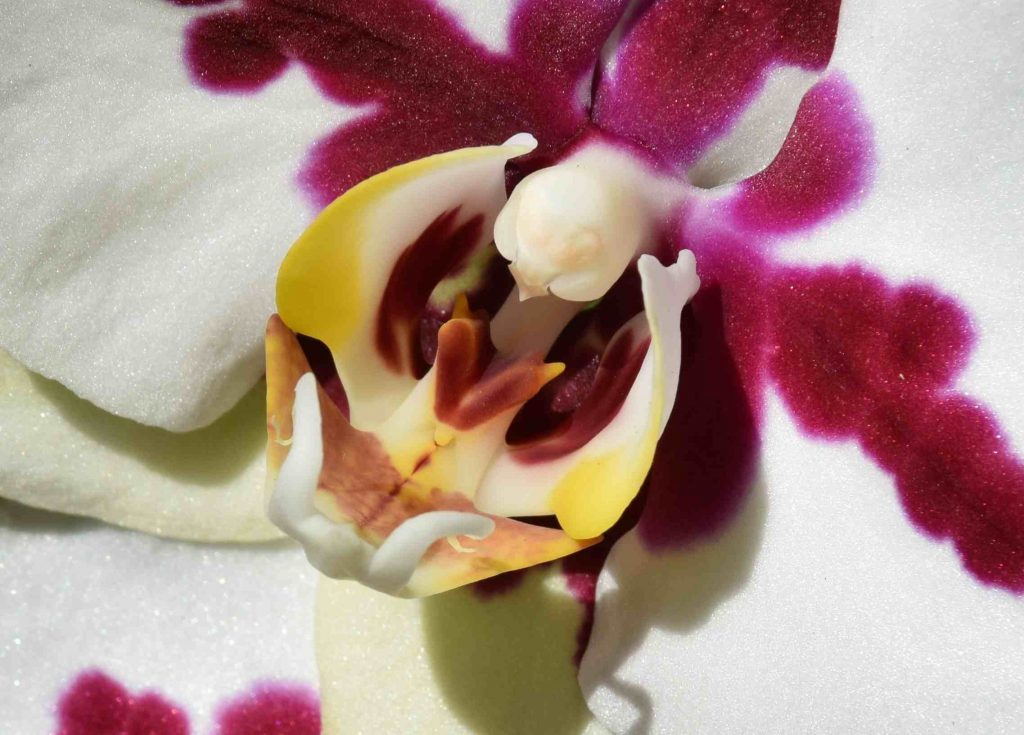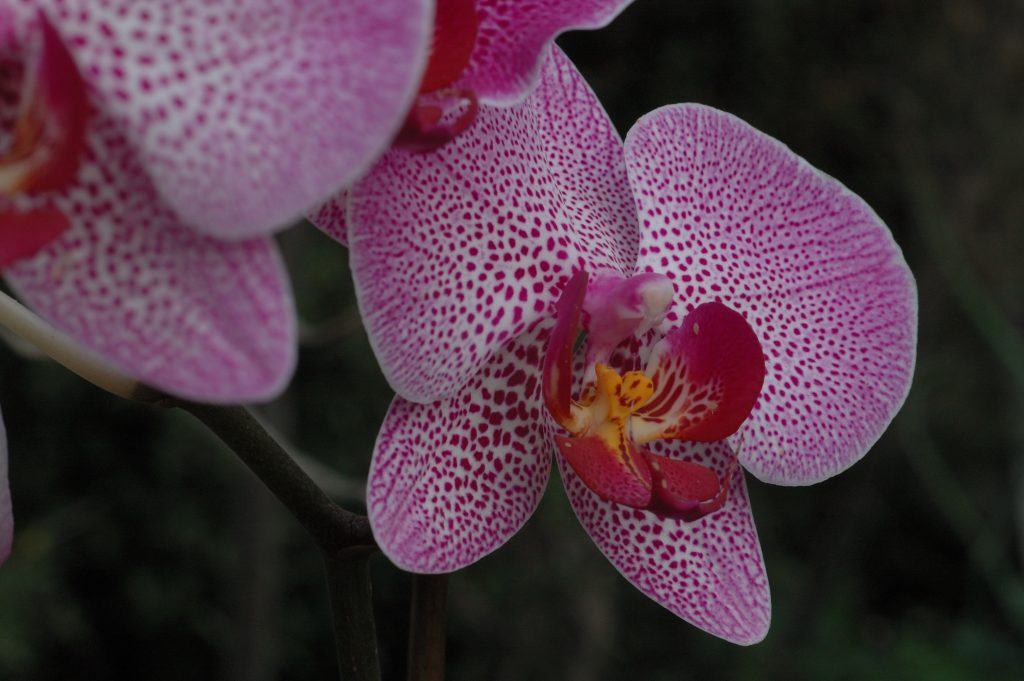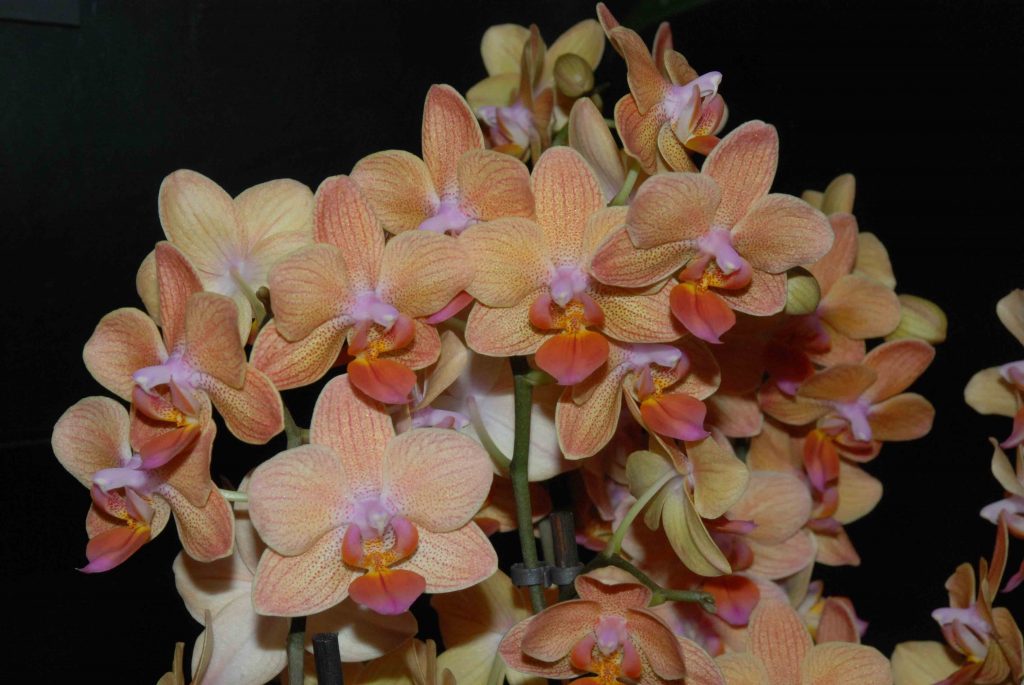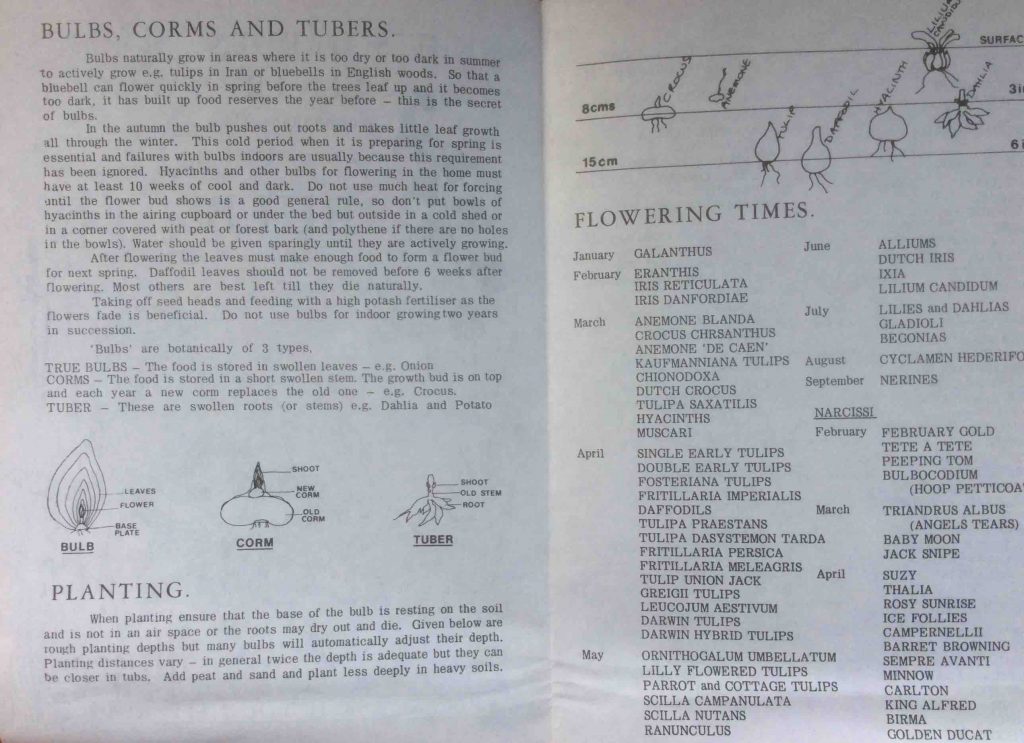
If you want to give a gift that has a touch of class and could last for years, choose a moth orchid (phalaenopsis).
Many years ago, when I started gardening, orchids were rare and expensive. I was desperate to own and grow orchids but they were hard to find and the most common were cymbidiums which, though lovely and not at all hard to grow, were not ideal houseplants. I did eventually get a few plants from McBean’s orchids near Lewes. They require cool, bright conditions and their flowers, though showy and beautiful, are definitely seasonal and you have to put up with a large, rather unexciting, plant for ten months of the year. If we wanted flowering houseplants we had to put up with pot chrysanthemums and African violets (what happened to them!).

But then phalaenopsis (fal ee nop sis) were produced in vast numbers in laboratories and their production costs plummeted and they became popular houseplants and very affordable. They are the perfect choice for a long-lived houseplant; they are showy, easy to care for and their flowers last for ages.
In recent years the range of colours and plant types has increased hugely, though I think I like pure white flowers best. The typical type has one or two vertical stems, that may arch, but mini-orchids have tiny flower on branched stems and plants often have their flower stems trained, either into arches or cascading.

To help you choose an orchid as a gift and keep your orchid alive, here are
Some key points:
These orchids like warmth and the temperature should be 10c (50f) as a minimum with 18c (65f) to 24c (75) being perfect, which is a fairly normal household temperature. Most of mine are kept in a room that falls to 15c (60f) in winter and the plants are perfectly happy. In fact, a slight seasonal variation can help to promote flowering.
They like bright light but not direct sunshine. Most people know that these are ‘jungle’ plants but they do not grow on the forest floor. In the wild, they live on the branches of trees – and knowing this gives is strong clues as to what they need.
They cling onto the branches to get to the light. If they drop to the forest floor they die. Their thick roots have to cling onto the branches. Never panic when plants produce new roots growing at strange angles, but avoid cutting them off if possible.
Because they grow in the branches they do not grow in ‘soil’ but accumulated leaves, bark and moss. When in a pot the compost is very ‘loose’ and drains quickly. In the wild they get a soak from the rain and then the roots may dry out and this is what they want in your home. If they sit in water the roots quickly die.
When it comes to watering, although frequency will vary with the season, wait till the pot is just dry (and light) and give a good soak, let the water sit in the pot cover for a few minutes, then pour away all the excess so there is no water in the pot cover.
The same applies to feeding, which can be once a fortnight in summer to once a month in winter. You can pour the excess feed into other plants when you are done. Every few months it is good to flush through the compost to remove excess salts, plunging the pot into a bucket of tepid rainwater for a few minutes.
It is always best to use rainwater or cool, boiled tapwater.
At home, a position in a north-facing window is good. If they are in too much light the leaves may turn yellow as they scorch. If the new leaves grow very long, longer than the oldest, mature leaves, it can be a sign the plant is too dark.
The individual flowers last several months. A plant can be in bloom for six months or more. I have had plants in bloom continuously for several years. Once the flowers drop from the stem, do not be in a hurry to cut it off: new flowers often grow from the ends and side shoots usually grow from lower down, with more flowers.
As each new leaf is produced, a new flower stem should be produced but only if the plant is fed well and the light is right. Plants in dark places, rarely fed and watered little will survive for years but not flower.
Do not be in a hurry to repot your plant – it will be fine in its pot for at least a year. And when you do repot it you must use orchid compost.
I have seen some awful things done to these orchids. They are evergreen and must not be ‘rested’ after flowering. And repotting into a large pot with ‘ordinary’ compost will kill them.
Last week I mentioned I would look for the Christmas leaflet I did for Knights many years ago, before word processors and home printers. Well, despite a long search in dusty boxes I couldn’t find it but I did find one on bulbs. It is a bit late but here it is; all done on a type writer. If you are too young to remember what a type writer is, lucky you!

